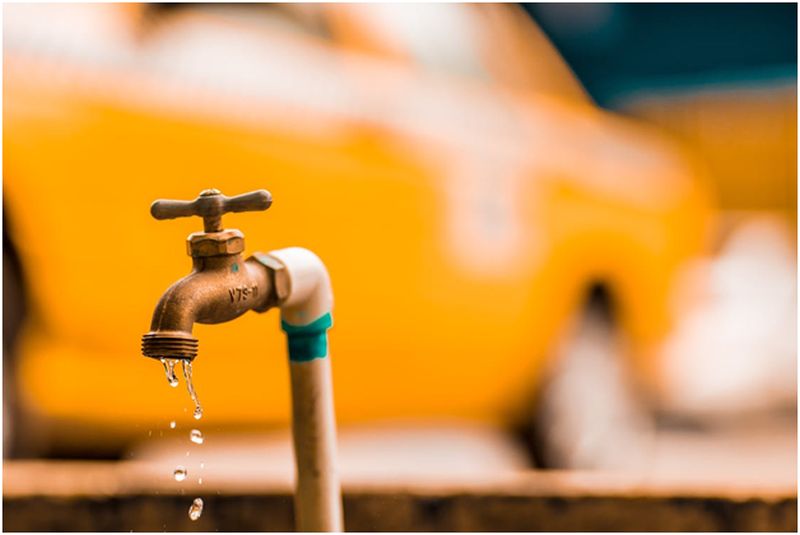Most leaks start as small drips that seem harmless and inconsequential. Over time, however, they can turn into large puddles or flooding. Tiny holes in pipes and loose connections quickly become huge problems if they’re not fixed immediately.
Also, note that a typical household can waste about 180 gallons of water weekly from leaks which quickly adds up over time. These statistics make it even more important to detect leaks on time and fix them as soon as possible. Here are several telltale signs that there may be a water leak in your home:
1. Dripping or Leaking Faucets
Dripping or leaking faucets are usually easy to spot and fix. Just tighten the connection or replace the washer. As mentioned earlier, ignoring these small leaks can lead to big residential plumbing problems down the road, such as wasted water, flooding, and higher water bills.
These leaks can also be due to faulty plumbing fixtures and require a professional plumber’s help. For instance, using a faucet with a ball valve rather than a washer will eventually cause the ball valve to wear out and start leaking. Washerless faucets are less likely to leak, but they’re also more expensive to repair.
2. Water Stains on the Ceiling or Walls
If you notice brown or yellow stains on the ceilings or walls, this strongly indicates a water leak. Water stains are usually accompanied by peeling paint or wallpaper and dampness on the surface. These stains are usually most visible in the morning since water often leaks overnight while you’re asleep.
Ceilings and walls are not the only places where water leaks show; attics are also susceptible. The main causes can be holes in the roof or defective gutters and downspouts. If you live in an older home, having your attic inspected yearly for water stains, mold, and other damages caused by leaks is an excellent idea.
3. Water Meter Reading Changes Unexpectedly
Pay attention to any sudden changes in the water meter reading. A higher-than-normal reading may indicate a leak in the plumbing system. To check for leaks, turn off all the water appliances and ensure no one is using any water. Then, check the water meter. If it’s still moving, there’s a good chance of a leak somewhere.
4. Mold or Mildew
Mold and mildew growth is due to several reasons, one of which is a water leak. If you notice any, find the source of the moisture and fix it. These fungi thrive in humid environments, so checking for leaks in areas such as the bathroom, kitchen, and basement is a good start.
5. Running Toilets
A running toilet is annoying and wastes a lot of water. Although the causes can vary, a leaky flapper valve is the most common. This problem is relatively easy to fix, but it’s always best to call a professional if unsure how to do it. Another issue could be a cracked toilet tank which requires a replacement.
How Do You Prevent Leaks
Prevention is always better than cure. Leaks can cause costly and irreparable damage to your home, so it’s best to do everything possible to prevent them. Here are a few tips:
- Inspect exposed pipes regularly for leaks, drips, or condensation
- Ensure all connections are tight and no damaged pipes
- Fix any dripping faucets or showerheads as soon as possible
- Install low-flow fixtures to save water
- Check gutters and downspouts regularly
- Upgrade to newer plumbing fixtures
Be Proactive
Conserving water and protecting your home from water damage are important goals. Being proactive and fixing leaks as soon as they’re detected saves money, time, and stress in the long run. Always have an emergency plumber’s number in case of serious leaks or burst pipes.
Article Submitted By Community Writer




